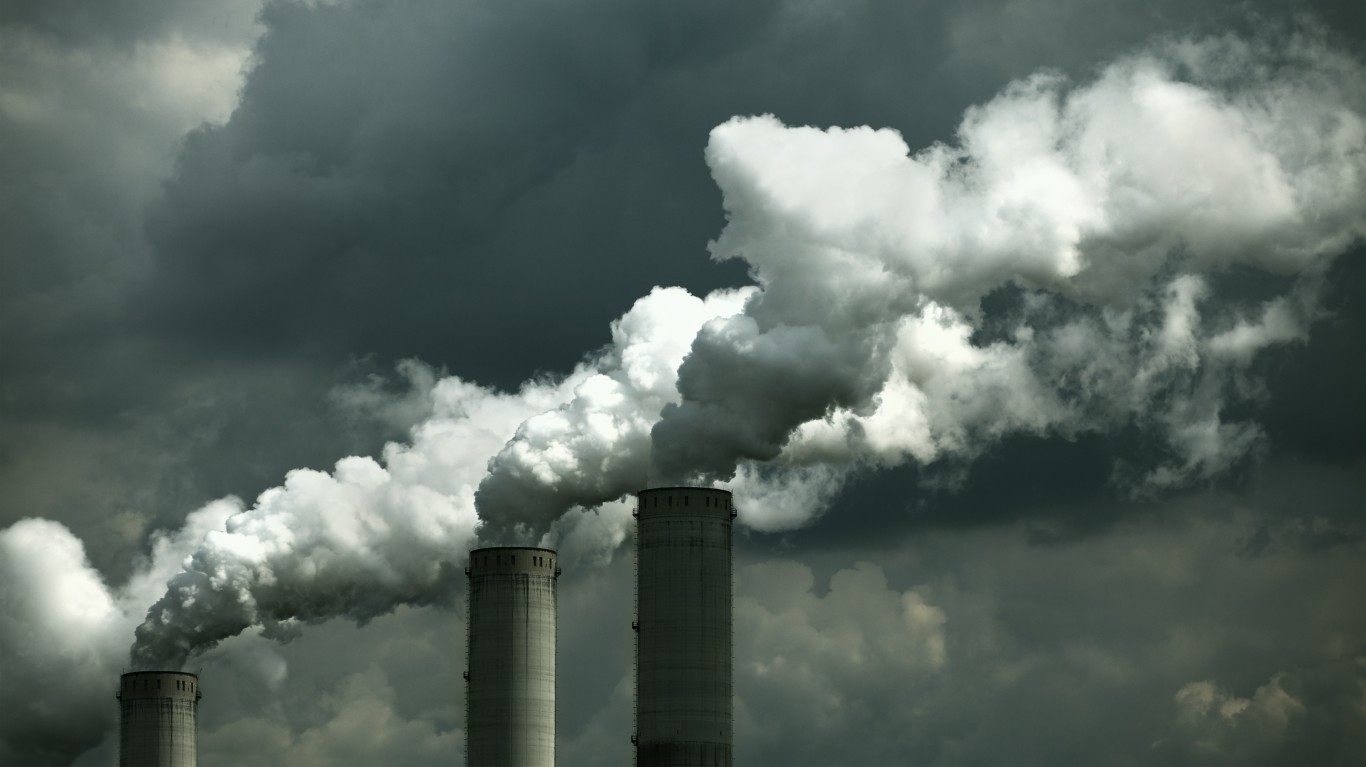
Since the passage of the Clean Air Act in 1970, the quality of the air we breathe has improved dramatically, and cleaner air has meant better health for most Americans. The Clean Air Act requires permits for the release of pollution into the air and has strict requirements for the removal of pollutants before they can escape from smokestacks, tailpipes, vents, and other sources.
Even so, four out of 10 Americans still live in counties with unhealthy air, and between 100,000 and 200,000 people die from illnesses caused by air pollution every year. (These are 23 places where industrial air pollution is so bad it causes cancer.)
Of particular concern are hazardous air pollutants – the Environmental Protection Agency regulates about 200 of them – that mainly come from burning coal or gas, or from industrial incineration. Regulation also allows for monitoring, allowing for the tracking and planned reduction of these pollutants, and also for informing the public.
To identify the 100 companies polluting our air, 24/7 Wall St. reviewed Political Economy Research Institute’s report, Toxic 100 Air Polluters Index (2021 Report, Based on 2019 Data). The report ranks companies by their toxic score – the estimated human health risk from air releases and incineration transfers in 2019 based on quantity released, toxicity of chemicals, and population exposure in 2019, using EPA’s Risk-Screening Environmental Indicators.
The quantity of toxic air releases and incineration transfers is in millions of pounds of toxic chemicals released in 2019. The report’s environmental justice measures include the percentage of the population living under twice the poverty line and the share of the population from minority racial/ethnic groups that are at risk for exposure to air pollution from these emitters.
The PERI data illustrates the fact that minorities are more likely to suffer from bad air – and other environmental insults – than non-minority people. According to the American Lung Association, people of color are one and a half times more likely to be breathing poor quality air – usually measured in terms of ground level ozone and fine particulates – than white people. According to the PERI report on toxic air emissions, of the 50 companies with the most dangerous emissions, 36 have minority populations exceeding 37% – the average for the country. (These are the most polluted cities in the world.)
The amount of air pollution will likely be reduced dramatically in the future as the world addresses the reality of climate change by shifting from fossil fuels to cleaner means of producing energy.





